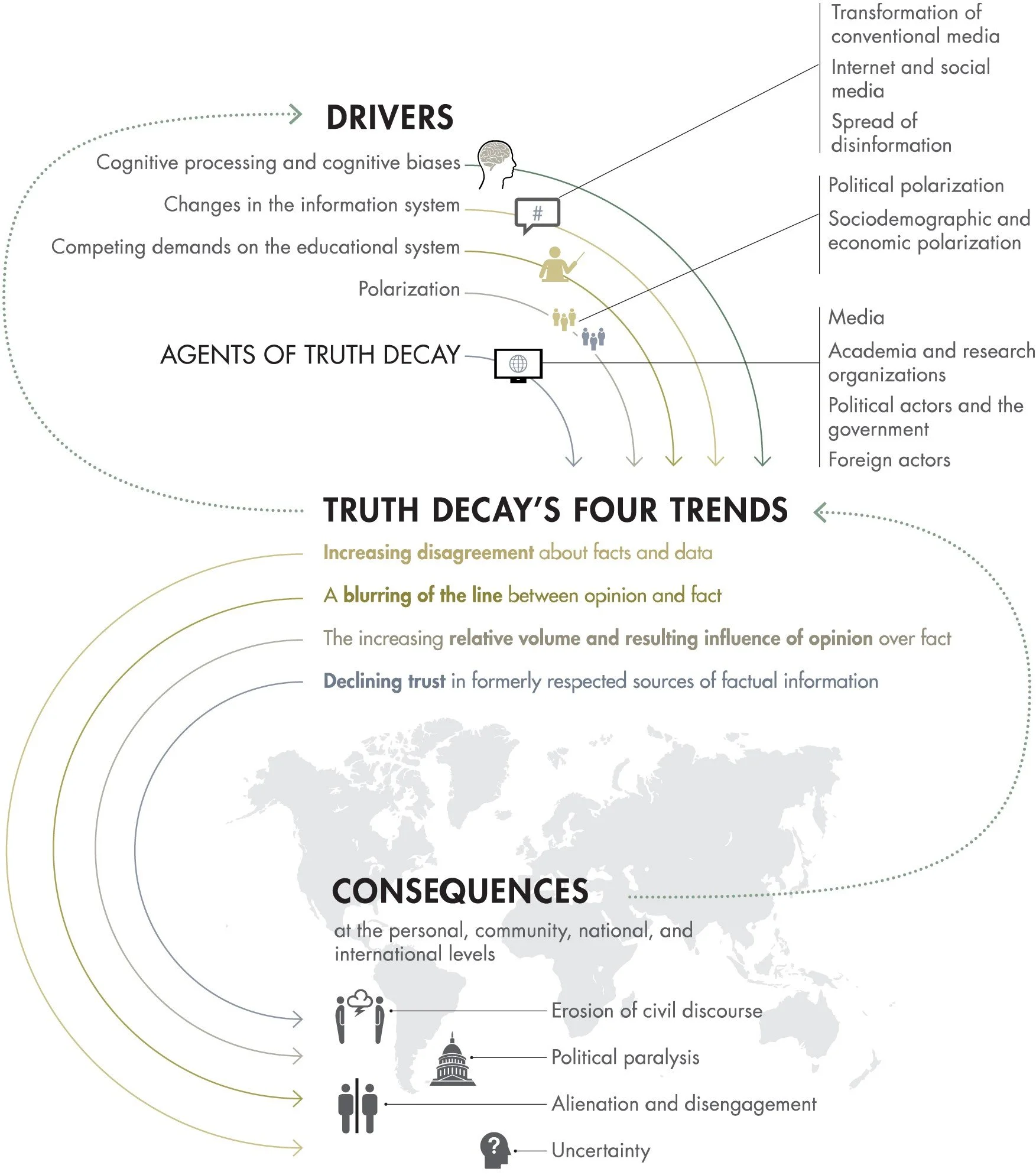The Truth Environment
Do we live in a Post-Truth World?
One in which there has been “Truth Decay”?
Operating in a Post-Truth Environment
Interview with Dr Gary Geipel
Discussing his articles: Post-Truth and National Security: Background and Options for a New Administration (2024) and Reality Matters: National Security in a Post-Truth World (2023)
Post-Truth Environment:
An information environment “in which verifiable facts are widely ignored or distrusted—replaced by opinion if not outright invention.”
Major components:
The embrace of “narratives” over fact-based accounts of the world,
Increasing “tribalism,” and
A breakdown of corrective institutions, leading to the “entrenchment” of these conditions on a massive scale.
Narratives: “Like scientific paradigms or intellectual philosophies, narratives consist of individual contentions that cohere into a larger notion of how some aspect of the world works. Unlike scientific paradigms or intellectual philosophies, however, narratives are not collections of facts or theories put forward for questioning and reassessment. Narratives usually begin and end with rigid dogmas to which any actual evidence—if it is considered at all—must conform. “ (Geipel, 2023, 14)
Tribalism: “Second, tribalism is a central feature of the post-truth environment: the sorting of more and more individuals into antagonistic groups on the basis of cultural affinity and partisan alignment.” (Geipel, 2023, 15) (See Hidden Tribes report. Group Breakdown posted on right or below )
Entrenchment: “Put simply: there are few places left to seek redress or shelter from the narratives and the dominant tribes.”
Hidden Tribes breakdown of Groups:
Progressive Activists (8 percent of the population) are deeply concerned with issues concerning equity, fairness, and America's direction today. They tend to be more secular, cosmopolitan, and highly engaged with social media.
Traditional Liberals (11 percent of the population) tend to be cautious, rational, and idealistic. They value tolerance and compromise. They place great faith in institutions.
Passive Liberals (15 percent of the population) tend to feel isolated from their communities. They are insecure in their beliefs and try to avoid political conversations. They have a fatalistic view of politics and feel that the circumstances of their lives are beyond their control.
The Politically Disengaged (26 percent of the population) are untrusting, suspicious about external threats, conspiratorially minded, and pessimistic about progress. They tend to be patriotic yet detached from politics.
Moderates (15 percent of the population) are engaged in their communities, well informed, and civic-minded. Their faith is often an important part of their lives. They shy away from extremism of any sort.
Traditional Conservatives (19 percent of the population) tend to be religious, patriotic, and highly moralistic. They believe deeply in personal responsibility and self-reliance.
Devoted Conservatives (6 percent of the population) are deeply engaged with politics and hold strident, uncompromising views. They feel that America is embattled, and the
Related Work:
Truth Decay: An Initial Exploration of the Diminishing Role of Facts and Analysis in American Public Life
Jennifer Kavanagh, Michael D. Rich (Jan 16, 2018)
Truth Decay: Four interrelated trends
an increasing disagreement about facts and analytical interpretations of facts and data;
a blurring of the line between opinion and fact;
an increase in the relative volume, and resulting influence, of opinion and personal experience over fact;
and lowered trust in formerly respected sources of factual information.
